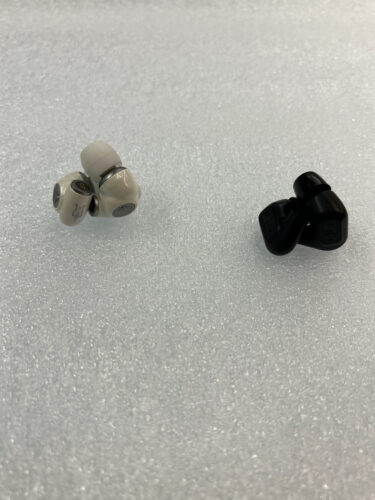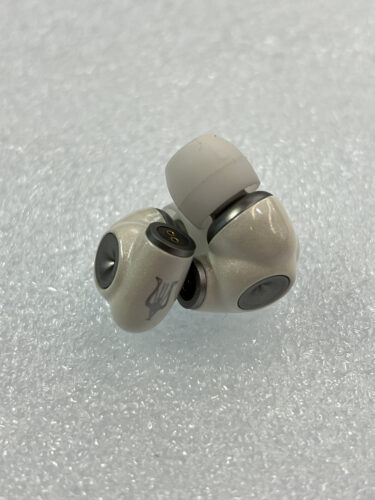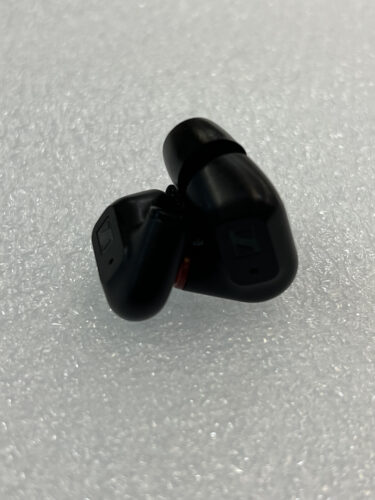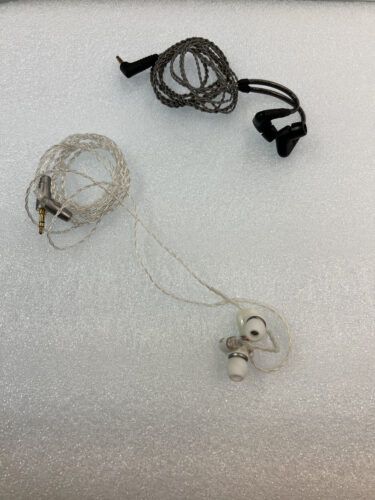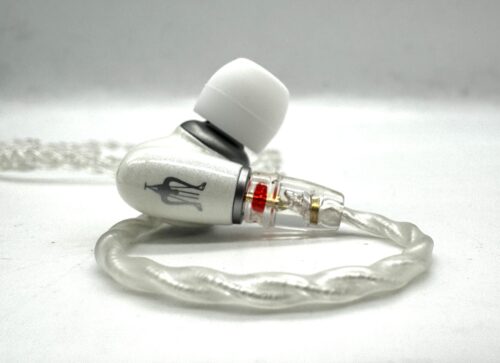Meze Alba vs. Sennheiser IE 200 Comparison Review
by Mark Hattar
(Updated )
Bookmark this article
Copy to clipboard
Email to a Friend
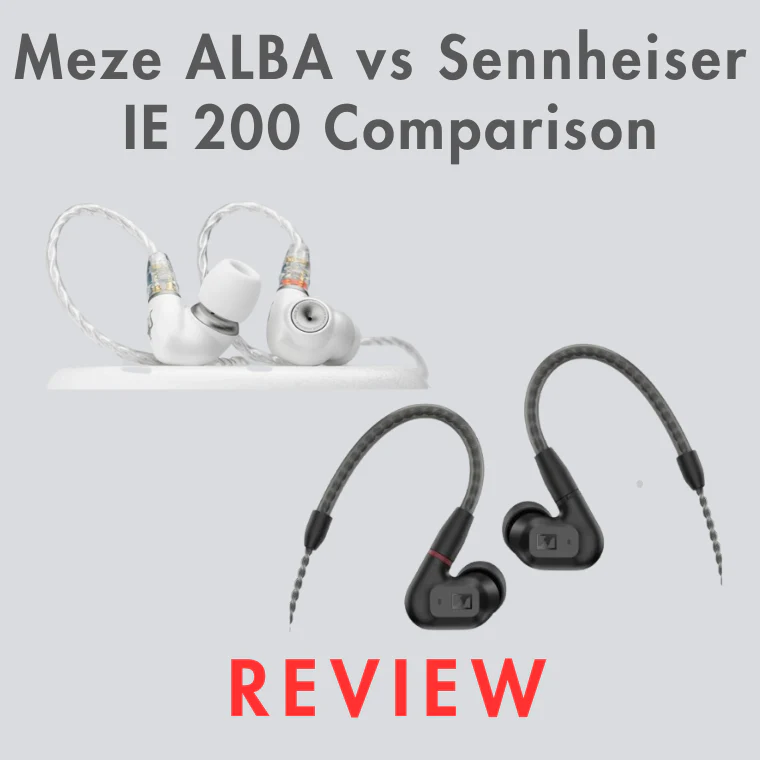
Sennheiser and Meze are 2 brands with seemingly opposite stories. Sennheiser is a historic German brand with classic audio products that have stood the test of time. Their releases remain popular because of their exacting audio quality, impressive durability, and reasonable pricing. Meze on the other hand was founded in 2010, bringing constant innovation to the audiophile world. Although one may be newer than the other, this hasn't stopped Meze from releasing a sub-$200 IEM called the Alba. Sennheiser's IE 200 has always been a popular option in this range. Both these products are excellent entry-level IEMs, so I want to put both to the test. Find out which is the best sub-$200 IEM in the Alba vs. IE200 comparison review.
What's in the Box?
|
|
|
Look and Feel - ALBA vs. IE 200
From a styling perspective, it seems like these brands took opposite approaches when designing these IEMs. Sennheiser's IE 200 have a small plastic black housing with grey cabling. Everything about this earbud is subtle, from it's compact design, to it's black color, to the nearly unnoticeable logo. Although this is an audiophile IEM, I could see performers gravitating towards the unadorned styling. The ALBA on the other hand takes it's name from the Romanian word for "first light". The Zinc/Aluminum alloy used for the driver housing is slightly larger but still comfortable. It's white and grey colors pop much more, but don't come close to being ostentatious. These are bright sounding headphones and I'll talk later on about this. It's nice to see a company being creative enough to make their earbuds look the way they sound. This gives the Alba major points in my book for creativity.
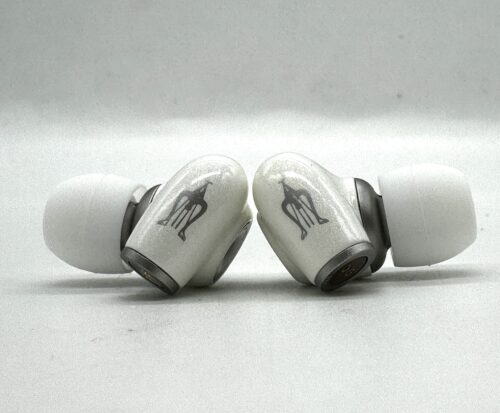
In terms of how the IEM feels, mileage will vary and this is even more relative than the looks. The small housing of the IE200 fits firmly in my ears, with a plethora of tips to ensure a proper seal. This condensed fit is popular amongst listeners, but the main gripe me and others have about Sennheiser IEMs is their cable. The plastic around the MMCX connecting feels stiff as it wraps around the ear. The cable itself is also sticky to the touch. I wouldn't say it's a bad accessory, I just think it's average considering the price.
Meze's Alba also feels firm and comfortable in the ear, much like the Sennheiser IE 200. Meze makes some of the best replacement cables in the industry considering their quality and price. This cable is no exception as it feels comfortable, soft, and thin. Neither of these are ultra-high end cables, and tangling is to be expected from both. I felt as if I got a better seal from the Sennheiser tips, but again my ears aren't shaped exactly like yours. For these reasons, I have to give the edge to the Alba in looks, but concede the IE 200 is more comfortable.
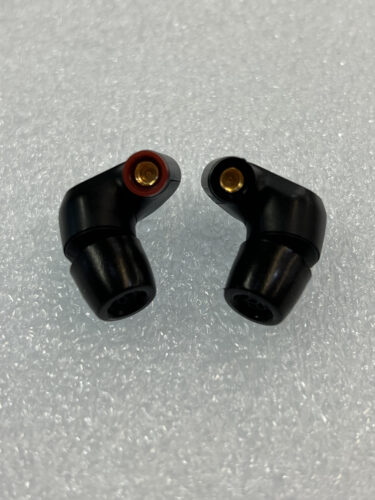
Design - Alba vs. IE 200
The 10.8mm dynamic driver in the Meze Alba is rated for <0.1% THD at 1 kHz. Comparing this to the 7mm dynamic transducer in the IE 200 rated for < 0.08% THD at 1kHz, we see that they are marginally close to each other's total distortion. These are both very clear and clean sounding drivers, lending themselves well to many genres. I was surprise to see that the Sennheiser IEM is measured to produce 119 dB at 1 kHz, 1 Vrms. The reported SPL of the Alba is 109 dB SPL/V at 1 kHz, but I wouldn't let these measurements dictate your opinion.
Seemingly, the IE 200 is slightly more power demanding than the measurements suggest. Couple this along with the fact that the Alba is a little more sensitive than one would expect. Plugged straight into the headphone port of my Macbook air, the IE 200 was slightly more sensitive than the Alba, but it didn't really sound a whole 10 dB louder. With the USB-C to 3.5 adaptor, I was able to get a little more bass volume. Plugged into the dongle, the Alba is nearly identical to the IE 200 in sensitivity, so users should not be worried about powering either unit.
Soundstage - Alba vs. IE 200
The IE 200 and Alba offer different soundstages, each with its own strengths. The IE 200 boasts a wider staging, creating the sense of spaciousness that extends further backwards and horizontally. This medium-large width comes at the cost of vertical dimension. As a result, the IE 200 may not convey as much vertical separation between the layers of a mix. Considering this, the IE 200 has more sound bleed between drivers than the Alba. This means that there's less of an analytical sound, but it still comes across more holographic than the Alba.
On the other hand, the Alba presents a more compact horizontal soundstage but makes up for it with increased vertical dimension. This creates a taller, more layered image, potentially offering better separation between instruments and vocals. I wouldn't call the Alba stage-like in it's verticality, like other more high-end Meze headphones are. But the verticality is a big step up from the IE200. The Alba also has far less driver bleed, where element's panning comes across more clearly and accurately.
Choosing between these two IEMs would depend on your personal preference, the source of the output, and the ensemble being recorded. The IE 200 would be the preference for a wider sound many audiophiles will enjoy. Although less cohesive, the Alba could appeal to those seeking analytical imaging and vertical layering. For me, I felt that the Alba suited my tastes more.
Listening Impressions - Alba vs. IE 200
Bass
The Alba and IE 200 have 2 different sound signatures that will be more or less suitable to certain genres and preferences. Without the supplied dongle, the Alba can sound a little thin in some spots. There's a plethora of upper mid-range and treble in their sound, but the bass is definitely going to be understated. This sound inspired me to explore Jazz and Classical music, where mixes typically lean a little warmer than bright. The main benefit of the dongle was how it pushed the volume of bass frequencies up ubiquitously. While testing with the dongle, the sound signature became much more even but remained bright.
The IE 200 follow the sound signature of the rest of the IE series, which is flat and even. My listening impressions gave me more warmness in the IEM, although I'm aware the Sennheisers will never boom in the way bass heavy headphones do. I noticed that although there's more bass volume, the similarity to the Harman curve made the bass feel a less tight. I must admit that neither of these sound signatures focus on bass. If you're looking for palpable sub-bass from either one of these, you're better off looking elsewhere. Nevertheless, I noticed a warmer more apparent bass sound in the IE 200. For this reason, I have to choose the Sennheiser when comparing low-end.
Mids
The IE 200's mids are tuned with a subtle approach which favors evenness rather than highlighting certain frequency ranges. I noticed how balanced voices and mid-range instruments sounded, without certain peaks and troughs in their frequency response. It was impressive listening to "Underworld USA" by Cold Cave. The sharp saw waves and wet guitar sounds rang out resoundingly, yet gave enough room for the reverb heavy vocals. At the same time, this balanced sound was a little lackluster at times. Nothing is too fatiguing, but it's also mundane in some ways.
The Alba's provides a brighter sound in part because of the boost noticeable past 600 hZ. Mid-focused sounds had more clarity and definition. Guitars, synths and horns all delivered more crispiness in their character, but had less richness which I typically find in the low mids. Although I typically prefer a flatter response, it was incredibly fun listening to the Alba. It wasn't offensively bright to me, but there was great detail in most elements of a mix. Snares (both virtual and acoustic) had a great crack to them which made me focus in on the driving rhythms in music. Definition in synths and drums make this a pleasurable listening experience, and gives the Alba the edge when comparing mids.
Treble
Your preference in highs is going to be the most discernible selling point between both of these IEMs. If you're not a fan of bright responses, you most likely won't appreciate the treble focus of the Alba. Similarly, sounds like cymbals, theremin, bells, sitars, and steel guitars are all plunky and pleasurable. Songs like "The New Firing Squad" by Nasum, did have some sibilance, but modern mixes didn't have this problem. By and large, I didn't notice an unreasonable amount of treble, and enjoyed the chiming quality that these elements have. Overall, this tuning is impressive in the way that it balances a focus on treble, while remaining non-fatiguing and versatile.
Overall, there's not much that is too defining in the treble signature of the IE 200. Peaks at 2.5 kHz and 6.5 kHz bring clarity and enough definition without sounding too warm or bright. I felt sibilance was less of an issue with these earbuds, but it wasn't a complaint I thought took away from the Meze Alba. Cymbals and feedback don't poke out as much on the Sennheisers, but sacrifice this for less clarity in the midrange.
I think the Sennheiser would be more versatile in bringing out the true sound of mixes, yet I don't think listeners will be too engaged with any particular aspect of the frequency response. I would personally choose the IE 200 for the music I like listening to, but I'm not a huge fan of bright headphones. Those of you that are will undoubtedly prefer the Alba and I must say I'm impressed with the treble tuning.
Summary
Your taste in sound signatures are definitely going to inform your decision when looking between both these IEMs. The Alba is a beautifully crisp IEM with a lot of definition and shape. Staging is represented accurately with an impressive verticality. The IE 200 is more subtle in it's signature, recreating sounds with great precision. At the cost of more driver bleed, sounds have a nice horizontal quality. The IE 200 has more of an reference quality where mixes sound balanced and cohesive. The Alba on the other hand has some great sharpness and separation. Between the 2 I feel as if the Alba provides better value for the money. The inclusion of a dongle, balanced 4.4 cable, and an electrifying sound signature make this a great purchase. The IE 200 is close behind, but the unimpressive cables and overall neutral sound made it less exciting when compared head-to-head.
Get the Latest Headphone News and Reviews in Your Inbox
Subscribe to our newsletter and get 10% off your first purchase!*
*some restrictions may apply


 FREE
FREE 